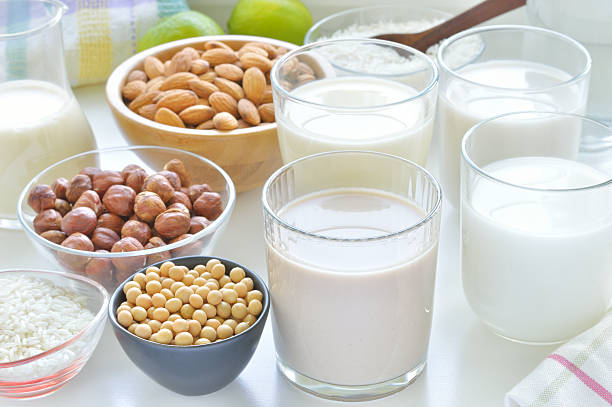Lactose free milk

Lactose Intolerance Symptoms concern millions of Americans who avoid adding regular milk to their cereals or coffee. They can’t process lactose in milk.
Some people with laxative intolerance can consume small quantities of dairy products containing very little lactose. These include cheese, butter, and yogurt.
Dairy products are naturally high in Calcium and other essential nutrients. Dairy products contain Calcium, as well as other essential nutrients. Many dairy products also include vitamin D.
Alternatives to regular milk include lactose-free milk, dairy products with added lactase, and dairy products containing.
Lactose-free cow’s milk contains an enzyme called lactase that breaks down milk sugars into simpler sugars. Lactose-free cows are similar to regular milk, as they have the same nutritional profile and are rich in protein. The amount of calories in lactose-free milk depends on how much fat it contains.
Lactose-free milk is a favorite beverage because most people cannot taste the difference. Lactose-free cow’s dairy is also available in organic and conventional varieties. Are you worried about not getting enough Calcium? The calcium content of lactose-free milk is the same as that in regular milk.
Lactose-Free 1% Low-Fat Milk. Lactose-free, 1% low-fat milk contains 8 grams of high-quality protein, 0 g fiber, 2.5 g fat (1.5 grams saturated fat), 13.5 grams carbohydrate, and 370 mg potassium. It also contains 300 milligrams of Calcium, 27 mcg of magnesium, and 0.9 micrograms of vitamin B12.
There are lactose-free alternatives to dairy products and cow’s milk. These can provide you with the same nutrients as dairy. When traditional milk is not an option, you can use lactose-free alternatives such as soy, almonds, rice, and oats. You can also include them in your recipes or breakfast. Soy milk is the most nutrient-rich and has more protein than any other alternative. You should always check the nutrition label to ensure you get all the necessary nutrients.
Soymilk (usually made from filtered water, whole soybeans, and evaporated sugar cane juice). Soy milk contains:
Eight grams of protein (of high quality).
1.5 grams of fiber.
3.5-gram of fat (0.2 gram omega-3 fatty acid).
Eleven grams of carbohydrate (sometimes fortified).
290 milligrams of potassium.
61 mm calcium (sometimes with more Calcium).
61 mm magnesium.
It is also fortified usually with vitamin B12, Calcium, and riboflavin, as well as vitamin D and B12.
Almond Milk (usually made from purified water and evaporated cane juice). Almond milk contains about 1 gram of protein, 1 gram of fiber, 2.5 grams of fat, 8 grams of carbohydrates, and 180 milligrams of sodium, and it is fortified with vitamins A, D, and E.
Rice milk (usually prepared with filtered water and organic brown rice in combination with safflower/canola oil and sea salt). Rice milk contains about 1 gram of protein, 0 g fiber, and 2 g fat and is fortified by Calcium and vitamin D.
Oat milk (usually made from hulled grains, filtered water, and other grains or beans). Oat milk contains about 4 grams of protein, 2 grams of fiber, 2.5 grams of fat, and 21 grams of carbohydrates and is fortified with vitamins A, D, Calcium, and riboflavin.
Lactose-Free Breakfast Ideas
Here are a few tasty ideas for a delicious and nutritious breakfast.
Soy Blend: Blend frozen fruit with banana, soy, or almond milk. You can also add soy yogurt. Soy is rich in Calcium, magnesium, and protein. It can be a healthy part of your breakfast.
Alternative Cheese:
Add shredded soy cheese, sliced dairy cheese, or lactose-free dairy cheese to your eggs or omelet for breakfast. Soy cheese that contains casein (a milk protein) melts better. Brands vary in flavor, but you can find mozzarella, Jack, and cheddar.
Breakfast Paradise:
Create a parfait of yogurt with soy or lactose-free yogurt, frozen or fresh fruit, nuts, or granola. Some soy yogurts contain Calcium and vitamin D and are a great alternative to dairy products. Each 6-ounce serving contains about 4 grams of protein.
Non-Dairy Baking Soy, Almond, and Rice Milk work well for baking instead of Cow’s Milk. Rice milk is thinner than cow’s milk and may require a smaller amount.
Lactose-Free Eggs
Make scrambled eggs by whisking one tablespoon of soy, almond, or lactose-free cow’s milk into each egg. If you want to reduce cooking fat in your pan, choose a nonstick pan. However, if it is necessary to cover the pan with oil, try olive or canola.
Lactose-Free French Toast Make cinnamon by dipping whole-wheat bread in a mixture of vanilla soymilk (or vanilla almond milk) and eggs, with a sprinkle of ground cinnamon. A lactose-free cow’s drink with vanilla extract is another option.
Nontraditional Quinche:
Make a lactose-free quiche using plain soy, almond, or lactose-free cow’s milk instead of cream or regular milk. Use soy or lactose-free cheese instead of traditional cheddar, and use canola or olive oil for the crust instead of butter.
How To Drink Milk
You may only be able to drink 1 cup of skim or low-fat milk at breakfast without experiencing any symptoms. You can take lactase replacement pills if you have trouble with dairy products. The exact nutritional value is found in lactose-free milk as it is with regular cow’s dairy.
Learn Which foods contain lactose. Some of the most common foods that contain milk sugar include:
Milk and milk-based drinks.
Milk-based foods and sauces.
Puddings and custards made with milk.
Creamer and whipping crème.
Ice milk, sherbet, and ice cream.
Yogurt in small amounts (because the bacteria helps digest some lactose).
Cheese (small quantities).
Butter (trace quantities).
Beware of Foods that May Contain Lactose
Check the label for lactose and milk-based products like butter, cheeses, curds (curds), nonfat dry or whole milk powder, and milk solids. Some other foods that contain lactose are:
Breakfast drinks.
Bread and bread products.
Mixes to make pancakes, biscuits, and cookies.
Cakes, brownies, and cookies.
Check the label of some processed breakfast cereals.
Instant potato and noodle mixes.
Bottled salad dressings.
Bottled sauces.
Milk Chocolate and Products Made with Milk Chocolate.
Lunch meats, except for kosher meats.





